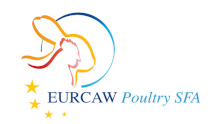Document type : scientific article published in Animals
Authors: Federica Raspa, Martina Tarantola, Domenico Bergero, Joana Nery Alice Visconti, Chiara Maria Mastrazzo, Damiano Cavallini, Ermenegildo Valvassori, Emanuela Valle
Preview: Horses reared for meat production can be kept in intensive breeding farms where they are housed in group pens at high stocking densities. The present study aimed to evaluate whether the expressed behaviours correlated with stocking density, and to compare their time-budget with that of wild-living horses. An ethogram of 13 mutually exclusive behavioural activities was developed. Behavioural observations were performed over a 72 h period on group pens selected on the basis of stocking density and the homogeneity of breed, age, height at the withers, and time since arriving at the farm. Scan sampling (n = 96 scans/horse/day) was used on 22 horses. The mean frequency (%) ± standard deviation (±SD) for each behavioural activity was calculated to obtain the time-budget. The associations between time-budget and stocking density were evaluated using a bivariate analysis. The relationships were analysed by Pearson's correlation coefficient (r). Our results show that locomotion, playing, and self-grooming positively correlated with a reduction in stocking density, indicating the potential to use these behaviours as positive welfare indicators for young horses kept in group pens. The data also revealed an unusual time-budget, where the main behavioural activity expressed was standing (30.56% ± 6.56%), followed by feeding (30.55% ± 3.59%), lying (27.33% ± 2.05%), and locomotion (4.07% ± 1.06%).




